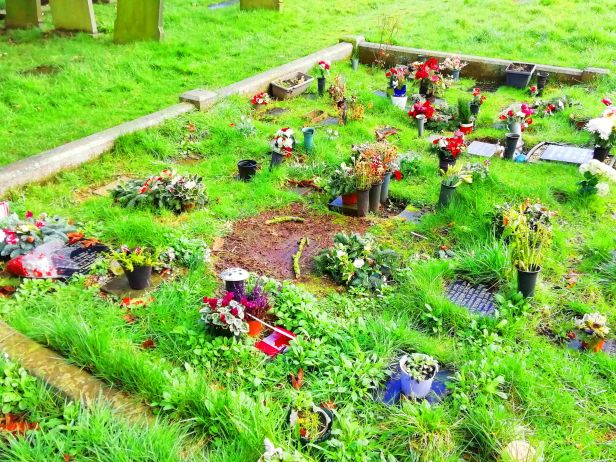St Laurence’s church, Frodsham, provides us with another good example of the contemporary reactivation of a long disused section of the historic churchyard for the interment and memorialisation of the cremated dead of the later 20th and early 21st centuries.
I’ve discussed this ‘switchback’ phenomenon in many previous posts, and published on it recently in the Routledge Handbook of Memory and Place.
What is distinctive about the Frodsham case is that the only cremation plot was established early, seemingly by the 1970s. Moreover, it is unusual in operating in both the horizontal and vertical plane, utilising a wall that formerly marked the boundary between the churchyard (upslope) and a separate vicarage garden (downslope) adopted into the grave yard sometime in the 1870s or 1880s.


 The square is rectangular, with plots marked by a host of different memorial types, low ledgers and flower-holders, potted plants and sundry ornaments (I noticed rabbits, Postman Pat and a Canadian flag), within a low collective kerb. These date from the 1970s through to the 2010s.
The square is rectangular, with plots marked by a host of different memorial types, low ledgers and flower-holders, potted plants and sundry ornaments (I noticed rabbits, Postman Pat and a Canadian flag), within a low collective kerb. These date from the 1970s through to the 2010s.
The retaining wall, however, affords a vertical space, each block receiving the names of 1-3 names of the same family and the date of their death. Most appear to date from the 1970s to 1990s.


A single bench is placed adjacent to the grave of a former vicar, used as a storage place for plastic milk bottles reused as watering cans and situated adjacent to the cremation burial plot.

Some memorials are clearly still tended with fresh flowers, yet the overall impression is one of a space that is rather scraggy – it is difficult to maintain such a dense and busy plot with grass growing in clumps of different lengths. Meanwhile, the memorial wall provides both a backdrop and a field of memorialisation in its own right. Still actively in use, this modest plot brings colour and intensity to a part of the graveyard dominated by late-Victorian memorials in colourless sombre ranks.
